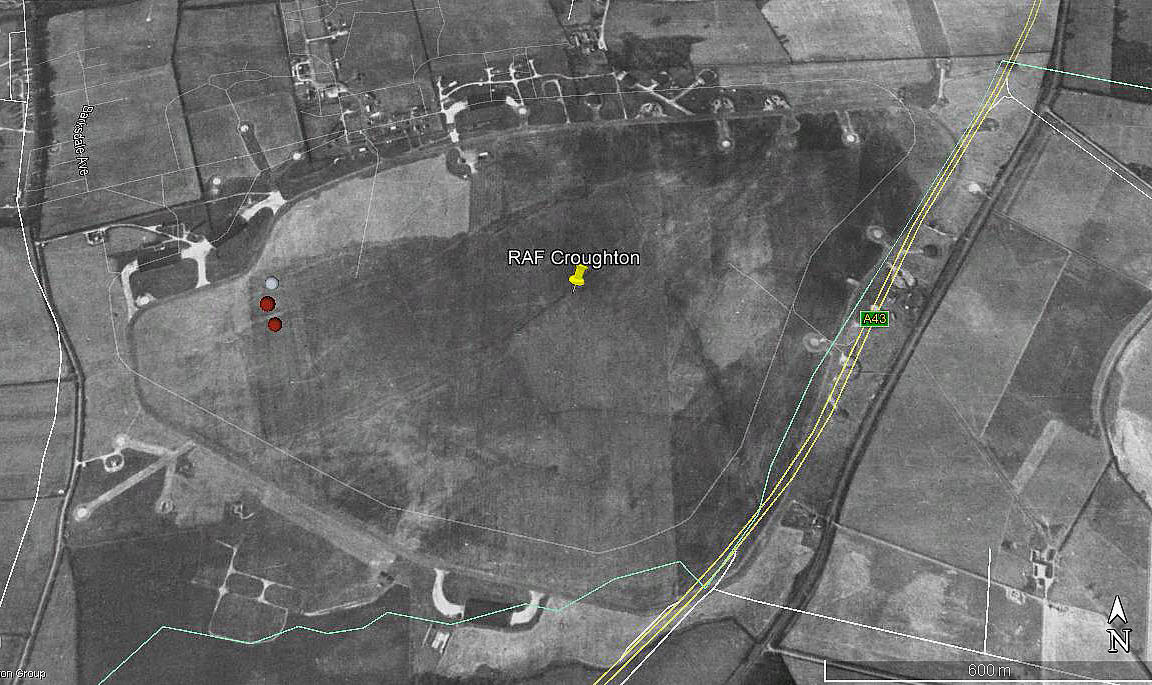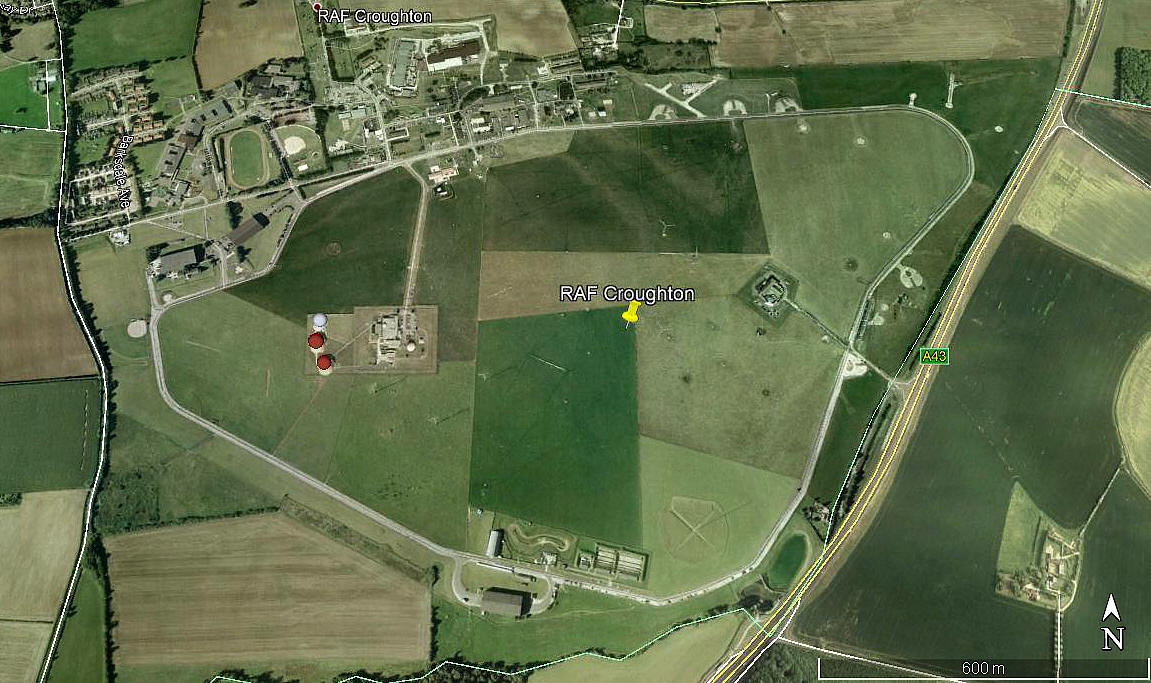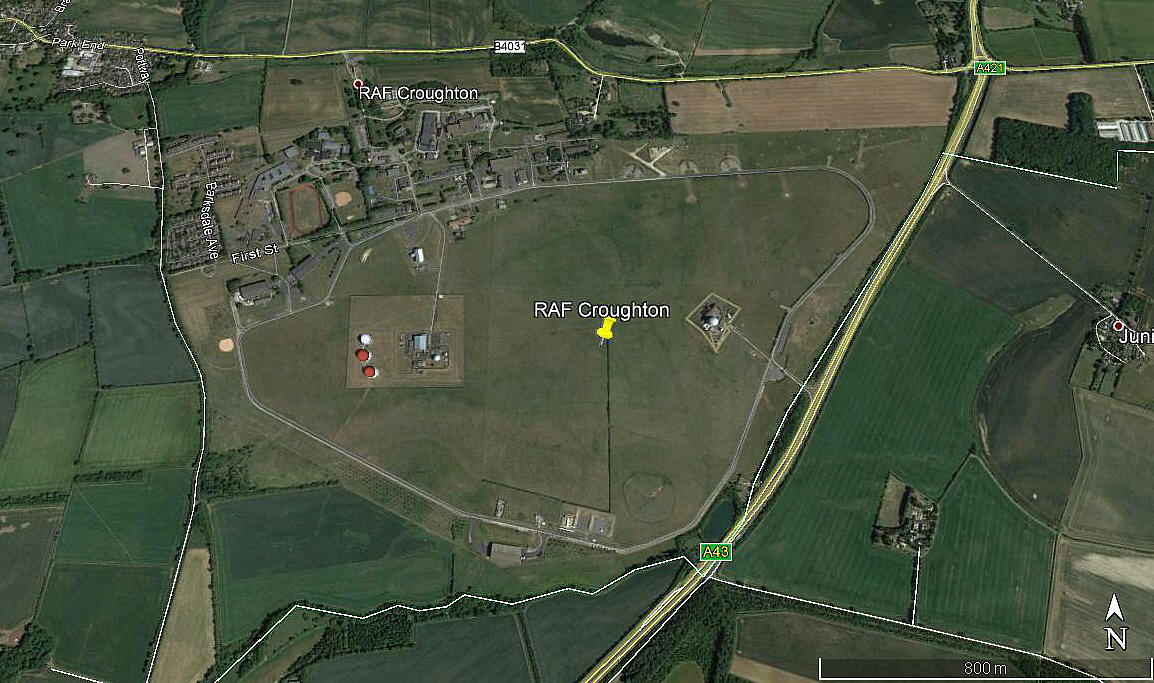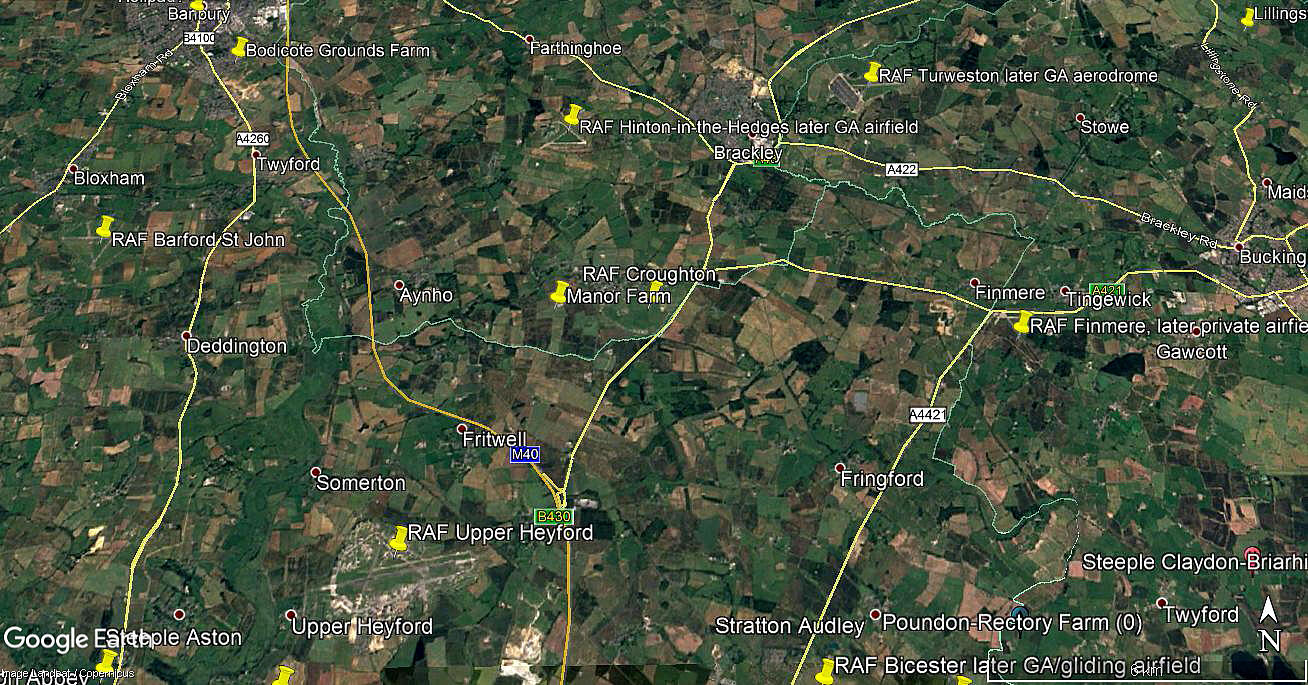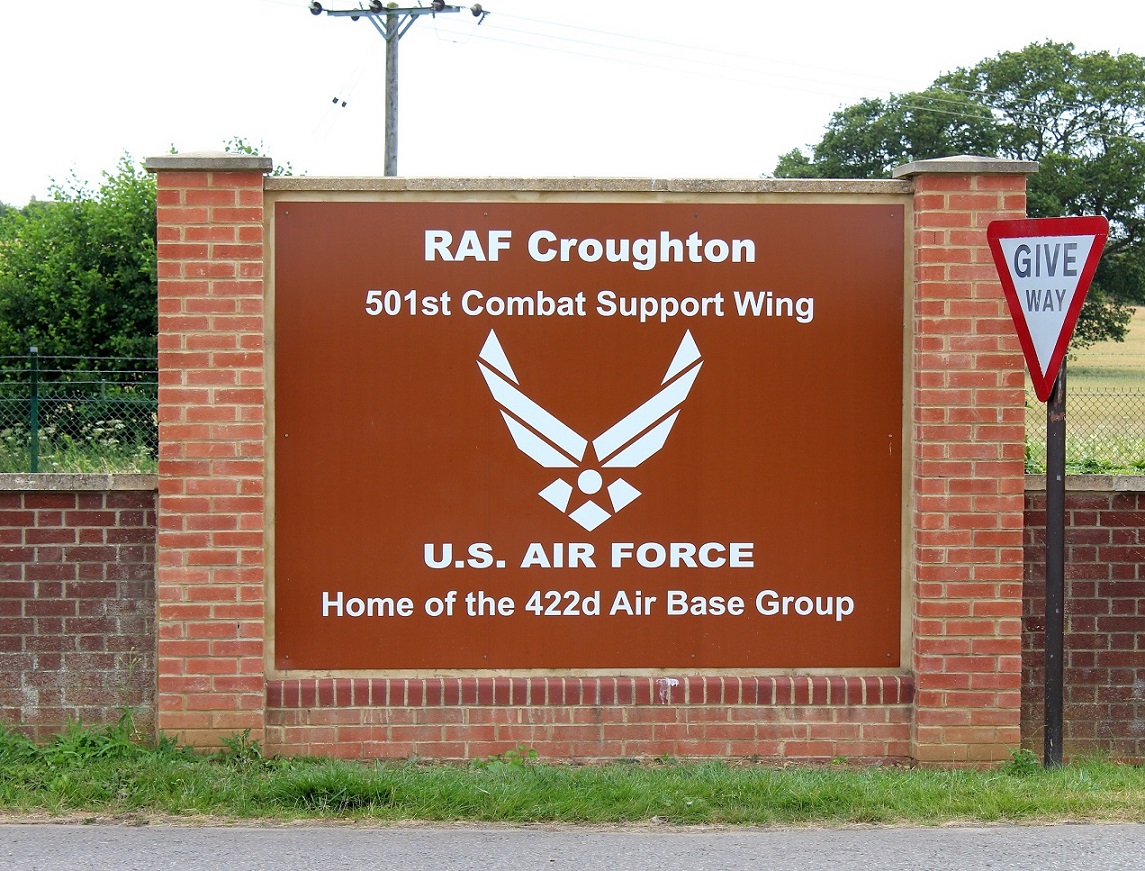Croughton flying sites
CROUGHTON: Military airfield (previously BRACKLEY Landing Ground 1938 till 1940 – then RAF BRACKLEY till July 1941)
Note: All four of these pictures were obtained from Google Earth ©
Military users: RAF Training Command 23 Group
AFU (Advanced Flying Unit)
Satellite for RAF UPPER HEYFORD
16 OTU (Bristol Blenheims, Handley Page Hampdens & Vickers Wellingtons)
RAF Bomber Command 7 Group
No.1 GTS [Glider Training School] (Hawker Hectors, North American T.6 Harvards and Miles Masters)
Note: It appears the Hectors and Masters towed Hotspur gliders – and later Douglas C-47s towed Horsa gliders. I am not aware of any mention of Harvards being employed as glider tugs, but perhaps I am mistaken. Were these employed to bring glider tug pilots up to speed on the Hectors and Masters?
Location: Croughton village is on the B4031, 3nm SSW of Brackley
Period of operation: 1938 to 1946 (flying only)
Runways: E/W 1828 grass NE/SW 1280 grass
NW/SE 1188 grass
Note: 694 acres in WW2, grass runways but concrete taxiways
NOTES: When reading Patrick Bishop’s excellent book Wings I found he gives one of the best decriptions of how an OTU functioned I have discovered so far. It seems well worth reproducing in full: “They then moved on to Operational Training Units (OTUs), the final stage before being launched into the air battle. It was here that individuals were welded into teams – the crews that would fly and die together in the cold and dark over occupied Europe.
The crew henceforth became the centre of the airman’s existence. Life beyond the base – the world of family and friends – took on a distant and secondary importance. The process was called ‘crewing up’ and it showed the RAF at its most inventive and imaginative. Instead of trying to apply scientific methods to decide likely compatibility, the anonymous devisers of the system took an enormous leap of faith and allowed human chemistry to work its magic. Essentially the crews selected themselves.”
AM I BEING TOO CYNICAL?
I am not so sure about this and remain far more cynical. Given that the Bomber Command regime was basically designed around the “troops over the top” approach in WW1 – throw enough at them and some will get through - I think the approach from above was more probably, “They’ll mostly be dead in a week or two, so let them sort themselves out.”
A GOOD STORY
Whichever opinion you favour Patrick Bishop tells a great story: “The procedure was very straightforward. The requisite numbers of each aircrew category were put in a room together and told to team up. As they were all arriving from different specialist schools, no one knew anyone in the other categories.” He then gives a fascinating account of how a sergeant pilot went about finding his crew. But, looking at it several times, I still think my opinion is correct.
LIMITING CASUALTIES?
This said Patrick Bishop also provides an item of information that really does focus on the quite extraordinary way Bomber Command quite casually took little or no care to limit casualties on most of their raids. Indeed, as pointed out elsewhere in this 'Guide', quite often a raid was (it would certainly appear) designed to maximise the opportunities for the German anti-aircraft gunnery ground forces and the Luftwaffe night-fighters to inflict the most damage. This is not just my opinion, it is a matter of fact well recorded in considerable detail.
As Patrick Bishop notes: “It took about £10,000 to train each crew member, the equivalent of about £800,000 in todays money. However, the expense of getting them into battle did not mean that once they got there, their lives would be worth very much.”
AFTER WW2
Look up CROUGHTON on the internet as you’ll get a most amazing and detailed history about this, (on the face of it), rather insignificant WW2 airfield. It went on to become the 422nd USAF communications base and hugely important to the USAF European network.
And, I believe, RAF CROUGHTON probably still is?
CROUGHTON: Private airstrip (See seperate entry for MANOR FARM, CROUGHTON)
NOTES: The info source for this was AAIB report EW/G2008/09/25. It states this farmstrip had two grass runways – one 09/27, the other 18/36.
We'd love to hear from you, so please scroll down to leave a comment!
Leave a comment ...
Copyright (c) UK Airfield Guide















